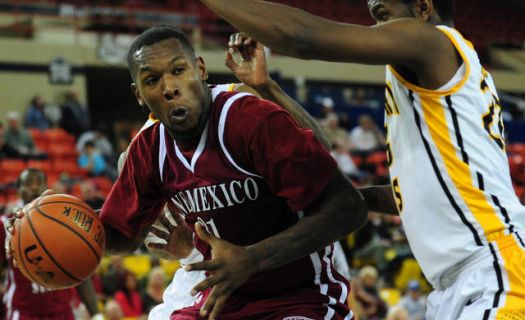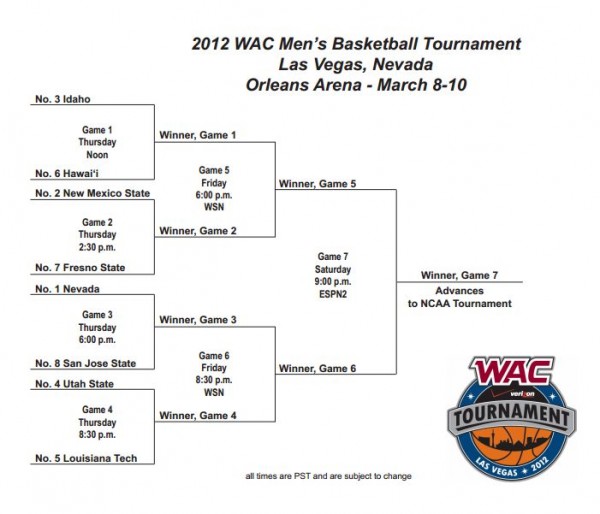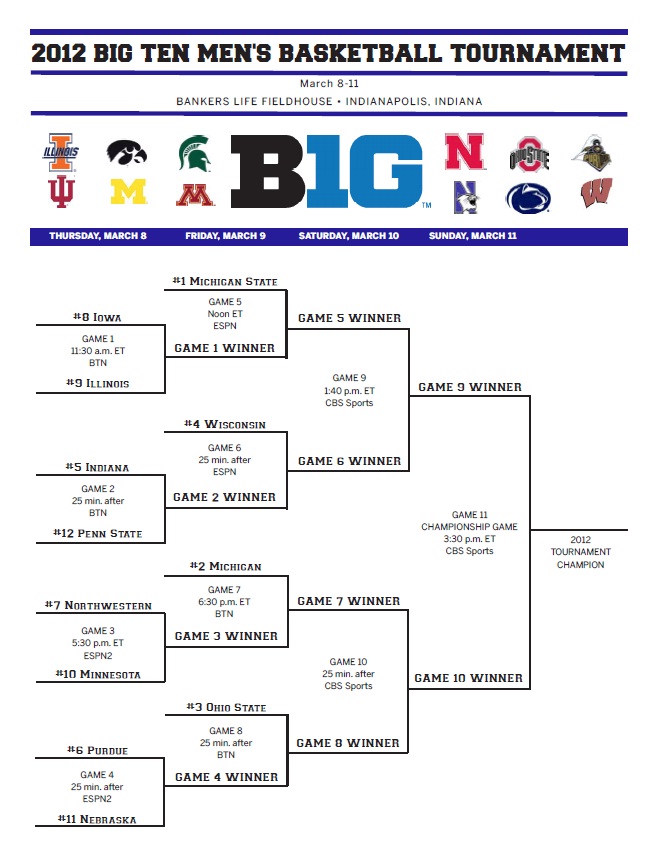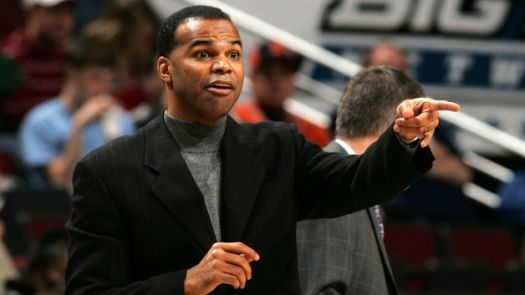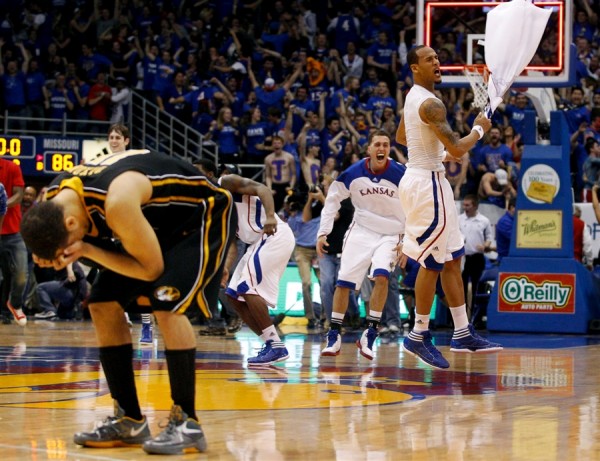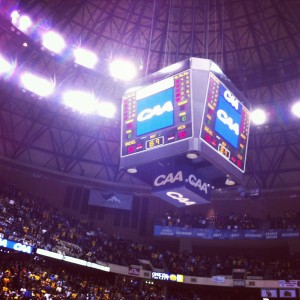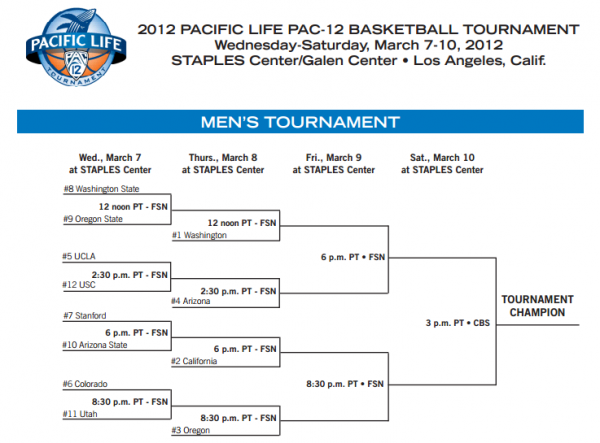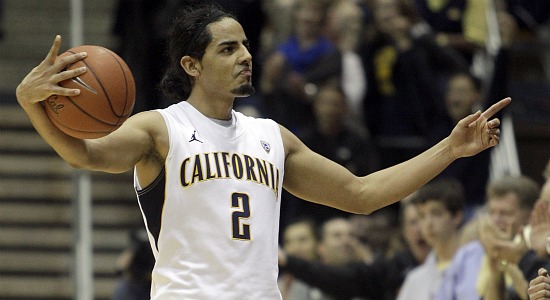Posted by Brian Goodman on March 6th, 2012

Brian Otskey is the RTC correspondent for the Big East conference. You can find him on Twitter @botskey.
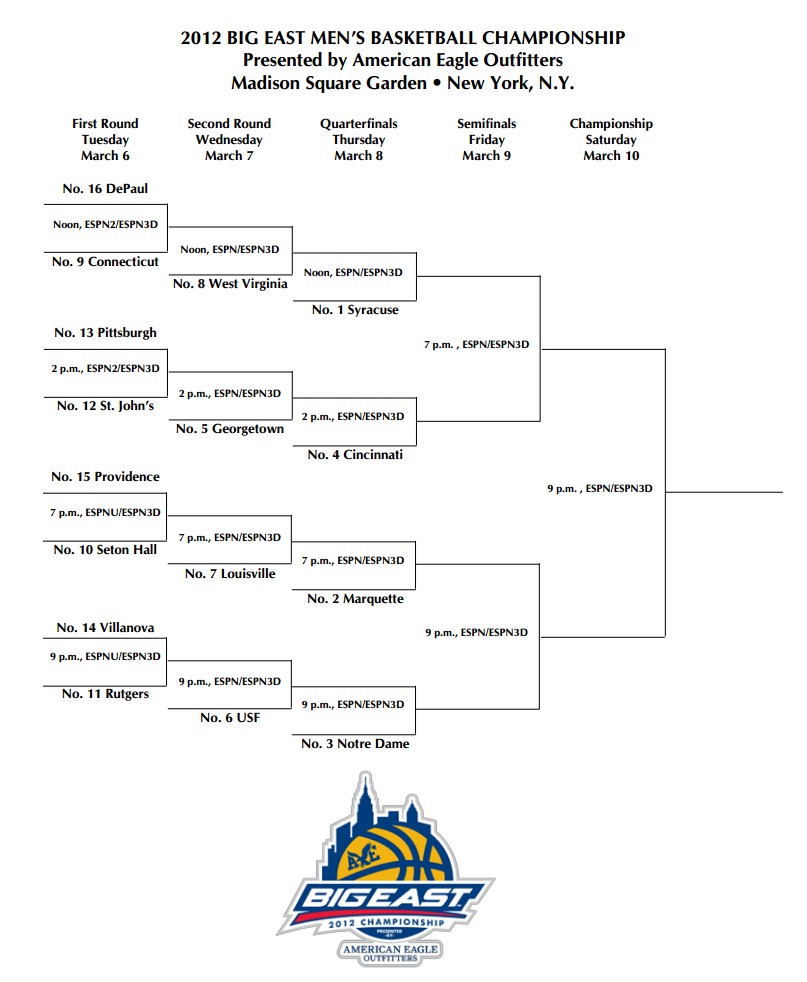
Conference Tournament Preview
- Can Anyone Beat Syracuse? – Yes, but only a handful of teams are capable. Notre Dame has proven they can do it and I feel Marquette has a solid chance. Georgetown took the Orange to overtime by slowing the pace and exposing Syracuse’s rebounding issues. In my opinion, those are the only three teams who can knock off the Orange. Given the Madison Square Garden crowd is going to be highly in favor of Syracuse, this is a tall order for any team to pull off.
- Bubble Teams With Work To Do – South Florida, Seton Hall, Connecticut and West Virginia, the pressure is officially on. I think USF and SH have the most work to do. The Bulls and Pirates won’t feel safe unless they win two games at the Garden and even that may not be enough depending what happens in other conference tournaments. Seton Hall absolutely has to beat Providence and Louisville back to back and then put up a solid showing against Marquette in a quarterfinal game. South Florida has a bye but must knock off Rutgers/Villanova before beating Notre Dame the next night. Connecticut has plenty of top 50 wins and strong computer numbers so I feel they’re safe provided they get by DePaul on Tuesday. As for West Virginia, the win at South Florida on Saturday was critical. The Mountaineers earned a first-round bye and will likely play Connecticut at noon on Wednesday. I think WVU is going to be in regardless, but beating the Huskies should lock up a bid for sure.
- Is There A Sleeper Team? – I doubt it, but South Florida, Connecticut and even St. John’s would be my candidates. The Bulls can win an ugly game against Notre Dame in the quarterfinals, but UConn may actually have the best draw. The Huskies open up with DePaul, coincidentally the same exact matchup as last season. They’ll face a West Virginia team they’ve beat already in the second round. Should they advance to the quarters, Connecticut will go up against Syracuse. The Huskies have played fairly well against the Orange twice this season and would have a reasonable chance to pull the upset. St. John’s is a team that’s playing better basketball and drew a favorable bracket. It wouldn’t shock me if St. John’s lost its opening round game but, playing on its home floor, the Johnnies could surprise.
Regular Season Recap
You could say this was easily a down year in the Big East, but the conference does have ten teams in contention for the NCAA Tournament as the season winds down, only one fewer than last season. However, the league is clearly not as strong from top to bottom. Syracuse was dominant, but no team came close to challenging the Orange for conference supremacy all year. The Orange were projected to win the league in my preseason conference primer, but it was my second and third place teams who completely flopped. Pittsburgh and Connecticut had highly disappointing seasons, even though the Huskies are still in the NCAA picture. The Panthers finished 16-15 (5-13), good enough for 13th place. Jamie Dixon’s squad was hurt by injuries and a notable defection, but on the court, this team did not defend at a high level. Pitt finished the regular season ranked 161st nationally in defensive efficiency, a far cry from their average of #27 over Dixon’s previous eight seasons on the sidelines at the Petersen Events Center. Ashton Gibbs had a disappointing senior season and the team was never able to put it together at any point.
As for the teams that surprised, you can start with South Florida. The Bulls were nothing more than an afterthought as late as January, but a commitment to defense and the play of freshman point guard Anthony Collins has vaulted the Bulls to the brink of their first NCAA Tournament bid since 1992. Although USF has just one top 50 win, this season has been a rousing success for the men from Tampa, who played all of their home games away from the Sun Dome due to renovations. Stan Heath may have saved his job in the process.
Marquette, Notre Dame and Georgetown were also surprises. Those teams were projected to finish sixth, ninth and tenth, respectively, in our conference preview. Marquette looks like a threat to go very deep in the NCAA Tournament while Notre Dame’s style of play and Georgetown’s defense will keep them in pretty much any game they play. The Golden Eagles have two of the best player in the conference and an unquenchable will to win.
As for the teams that projected out according to form, Cincinnati went 12-6 in the league as predicted, Rutgers went 6-12 and Providence went 3-15. In addition to those three, West Virginia, Seton Hall, St. John’s and DePaul finished about where they were expected to. The Mountaineers and Pirates have a chance for the NCAA’s while St. John’s showed some late-season progress and could be a tough out on their home court at Madison Square Garden this week. Louisville finished 22-9 (10-8), three games worse than where I had projected it. The Cardinals started the year hot, but went just 10-9 after sprinting out to a 12-0 record through December 23.
Villanova was another team that disappointed. The Wildcats weren’t expected to be great, but many thought they could find their way to the NCAA Tournament. Instead, Villanova struggled all year as players who were expected to improve did not before injuries took a huge toll on the Wildcats late in the season. Villanova’s future is relatively bright, but this was definitely a lost season on the Main Line. VU’s streak of seven consecutive NCAA appearances will come to an end unless there is some divine intervention in the form of five wins in five days in New York.

Jim Boeheim And The Orange Have Locked Up A One-Seed, But Will Reports Of Unpunished Failed Drug Tests Knock Them Off Their Path? (Mark Konezny/US Presswire)
Coach of the Year
Jim Boeheim, Syracuse – This was a really tough choice. Do you go with the coach of the best team by far or pick someone like Stan Heath or Mike Brey who led teams projected in the bottom half to finishes closer to the top of the league? Guys like Buzz Williams and John Thompson III also deserve consideration. In the end I chose Boeheim because this year’s Syracuse team was historic. Sure, I picked them to win the league from the start, but in no way did I think this team would go 30-1 (17-1). The Orange are the first team in Big East history to get through the entire regular season with only a single loss. Boeheim has assembled a rotation that can go ten deep and kept the team focused through some off-court distractions. He’s a Hall of Famer for a reason and was the best coach in the league this season.
Player of the Year
Jae Crowder, Marquette – This may be a controversial choice to some, but here’s why I picked Crowder over Kevin Jones. Yes, Jones had better statistics throughout the year, but Crowder has out-played Jones over the last month and plays for a team considerably better than West Virginia. Plus, what fun would it be if we just looked at the statistics and ignored intangibles? Crowder averaged 24.7 points and 9.2 rebounds per game over his last six and won the head-to-head matchup with Jones in convincing fashion on February 24. Crowder put up very similar numbers using 21.9% of his team’s possessions compared to 23.3% for Jones. Not a huge difference, but I feel it matters when one team is 25-6 (14-4) while the other is 19-12 (9-9) and has lost seven of its last 11 games heading into the postseason. Crowder, along with Darius Johnson-Odom, has put Marquette on his back and carried it to heights not seen since Dwayne Wade played at the Bradley Center. He’s played his best ball at the right time while Jones has not led his team in nearly the same manner down the stretch. Crowder is also a better defender (2.4 steals per game) and a more efficient shooter from inside as well as the perimeter. I felt that also helped to push him over the top. I don’t have a problem with either player winning the award, but I usually go for the player on the better team when it’s a close call like this is.
All-Conference First Team
- Jae Crowder, Marquette (17.6 PPG, 7.9 RPG, 2.4 SPG, 51.2% FG) – Crowder was the do-it-all player for the Golden Eagles, leading them to their best regular season record since a 23-4 mark in 2002-03.
- Kevin Jones, West Virginia (20.0 PPG, 11.2 RPG, 51.5% FG) – Without Jones, the Mountaineers would be in the bottom third of the league. The senior had the best season of his career, leading the conference in scoring and rebounding pretty much from start to finish.
- Darius Johnson-Odom, Marquette (18.3 PPG, 40.1% 3FG) – Crowder and DJO form perhaps the most potent one-two punch in college basketball on a team that could be a Final Four sleeper.
- Kris Joseph, Syracuse (14.1 PPG, 5.0 RPG) – The amazing thing about Syracuse is not one player on a 30-1 (17-1) team is in the top 18 in scoring. Joseph ranks 19th, but came up big when it mattered most, averaging 17 points for the Orange in their six games decided by five points or less.
- Jeremy Lamb, Connecticut (17.6 PPG, 47.5% FG, 82.6% FT) – Connecticut underachieved, but the best returning player from last year’s national championship squad posted double figures in all but three games for a team that struggled to find its way on the offensive end. A career-high 32 points in a late season win at Villanova just might have saved his team’s season (at least for now).

A Late-Season Push Propelled Jae Crowder Past Kevin Jones For Player Of The Year Honors.
All-Conference Second Team
- Vincent Council, Providence (16.2 PPG, 7.5 APG) – A lot of people may not know about Council, but that’s about to change next season when Providence welcomes in more talent to be on the receiving end of passes from the best assist man in the Big East.
- Scoop Jardine, Syracuse (8.6 PPG, 4.9 APG, 47.7% FG) – The statistics aren’t eye-popping, but Jardine was the point guard for a team that lost once in 31 games. He took much better care of the basketball this season and improved his shooting efficiency despite a drop in scoring from last year. On a team with ten legitimate players, he doesn’t need to score in double figures.
- Jordan Theodore, Seton Hall (16.0 PPG, 6.7 APG, 1.9 SPG) – Not surprisingly, Seton Hall’s season went as Theodore’s did. When he was on, he looked like the best point guard in the conference (29 points, 5 assists against Georgetown). When he wasn’t (10 points, 5 turnovers against DePaul), Seton Hall looked awful. Despite the inconsistency from the senior, Theodore deserves the bulk of the credit for getting the Pirates in the NCAA Tournament conversation.
- Jason Clark, Georgetown (14.3 PPG, 4.2 RPG, 47.8% FG) – Underappreciated for four seasons in Washington, Clark led his team in scoring and vaulted the Hoyas well into the top 25 after they were projected to be a bubble team in the preseason. Clark was a model of consistency and a great glue guy on a strong defensive team.
- Jack Cooley, Notre Dame (12.5 PPG, 9.2 RPG, 62.1% FG) – Cooley came out of nowhere to become the anchor in the paint for a Notre Dame team that took the conference by storm. He recorded a double-double in six of his last eight games and would be my pick for most-improved player.
Honorable Mention
- Dion Waiters, Syracuse (11.9 PPG, 1.9 SPG, 47.1% FG) – Perhaps the best sixth man in the nation, Waiters sees starter’s minutes on one of the elite teams in the nation. A spark on both ends of the floor with his dynamic transition game, Waiters’ improvement is a big factor in Syracuse’s success.
- Henry Sims, Georgetown (11.1 PPG, 5.6 RPG, 3.4 APG, 1.4 BPG) – It’s not often you see a 6’10” player lead his team in assists, but that’s exactly what Sims did (and by a wide margin). A candidate for most improved player, Sims was a major reason why Georgetown exceeded preseason expectations.
- Cleveland Melvin, DePaul (17.4 PPG, 7.3 RPG) – Melvin has been a solid player for two years now. It’s too bad he plays on a bad team.
- Herb Pope, Seton Hall (15.3 PPG, 10.3 RPG) – A very early frontrunner for conference POY honors, Pope’s production really tailed off in conference play. Still, his presence in the middle and strong rebounding is vital to the Hall’s success.
- Maalik Wayns, Villanova (17.5 PPG, 4.6 APG, 89.3% FT) – Wayns will never be confused with efficiency, but he’s a guard who can create contact and get to the line with the best of them. One of the better free throw shooters in the nation knows how to play to his strengths.
All-Freshmen Team
- Moe Harkless, St. John’s (15.0 PPG, 8.6 RPG) – Harkless put up some dominant numbers right away because he was able to see plenty of minutes on a thin team, but he’s a terrific piece to build around as the Johnnies move forward. A special talent.
- Anthony Collins, South Florida (8.0 PPG, 5.3 APG, 49.3% FG) – Almost singlehandedly, Collins has willed the Bulls to the brink of the NCAA Tournament. After missing five games with an injury, Collins took over the point guard duties and led South Florida to a 12-6 conference record.
- LaDontae Henton, Providence (14.3 PPG, 8.6 RPG, 40.2% 3FG) – Henton was a surprise on a Friars team that remained competitive despite a poor record. Henton was thrown into the fire right away, playing 37.1 minutes per game on a very thin team. He responded well and didn’t hit a wall late in the season as most freshmen do.
- D’Angelo Harrison, St. John’s (17.0 PPG) – Harkless’ sidekick actually led St. John’s in scoring and played his best basketball in February.
- Otto Porter, Georgetown (9.0 PPG, 6.8 RPG, 51.0% FG) – A player with a great motor who has a ton of upside, Porter has a high basketball IQ and the toughness needed to excel in Georgetown’s system. He’s as good of a rebounder as I’ve seen for a freshman.
Defensive Player of the Year
Fab Melo, Syracuse (3.1 BPG) – Melo led the conference by a wide margin in blocks in conference games (3.73), but finished behind Louisville’s Gorgui Dieng in the block totals for all games. Melo’s presence anchoring Syracuse’s zone changed so many shots and made it easier for Syracuse to defend opponents on the perimeter. When he didn’t play against Notre Dame, the Irish went wild from deep because the Orange didn’t have their big man on the back line to defend drives. A case can be made for Dieng, but Melo was a dominant force defensively for the nation’s #2 team.
Game of the Year
January 21 – Notre Dame 67, Syracuse 58: There is no clear-cut winner for this award, but I’m going to go with Syracuse’s only loss of the season. Notre Dame handed the Orange, playing without Fab Melo, their first and only loss of the season. The Fighting Irish shot 50% for the game and won by a score of 67-58, Notre Dame’s first win against a top-ranked opponent in 25 years. However, it was ND’s eighth win all time against a #1 team and seventh in South Bend. It was a magical night for the Irish and the first win in what would become a nine-game winning streak, a decisive run that pushed Notre Dame solidly into the NCAA Tournament field.
Other nominees: Marquette 61, West Virginia 60 (February 24). Syracuse 64, Georgetown 61 (OT, February 8). Notre Dame 67, Louisville 65 (2OT, January 7). Georgetown 73, Marquette 70 (January 4).

An Outstanding Point Guard In Anthony Collins Has USF In The Running For A Tournament Bid.
Power Rankings
- Syracuse (30-1, 17-1) – The Orange are playing with house money in New York as they are a lock for a #1 seed in next week’s NCAA Tournament. Syracuse has a tough draw with West Virginia or UConn waiting in the quarters before going up against possibly Cincinnati or Georgetown in the semifinals on Friday night. The only question could be if the Orange play the Big East Tournament on cruise control, knowing their NCAA situation is secure.
- Marquette (25-6, 14-4) – Marquette is playing the best basketball of any team outside of central New York. The Golden Eagles won 13 of their last 15 games and can absolutely win this tournament. A BET win could give Buzz Williams’ team a #2 seed in the big dance.
- Georgetown (22-7, 12-6) – This team has been solid all year, but its normally stout defense was exposed in late season losses to Seton Hall and Marquette. The Hoyas gave Syracuse all it could handle on February 8 at the Carrier Dome and another meeting at MSG isn’t out of the question. Georgetown will get a nice seed in the NCAA Tournament, but the Hoyas have to bring it defensively in order to avoid another early exit.
- Cincinnati (22-9, 12-6) – Despite a horrid non-conference schedule, the Bearcats have plenty of top 50 wins on their resume. I believe this team should be and will be in the NCAA Tournament no matter what happens in New York. Still, beating Georgetown/St. John’s/Pitt in the quarterfinals wouldn’t hurt. Cincinnati won five of its last six games, making a strong case to the NCAA Committee in the process.
- Notre Dame (21-10, 13-5) – The Irish lost two of their last three games, but it was a remarkable season for Mike Brey’s squad. Considered to be done after losing Tim Abromaitis, Notre Dame re-invented itself and locked up a tournament bid with a one month long nine-game winning streak. The Fighting Irish are a threat in the bottom part of this week’s bracket.
- South Florida (19-12, 12-6) – It was encouraging to see the Bulls go into Louisville and win the game they had to have. It was a wildly successful season for USF. The team completely changed its trajectory when Anthony Collins returned from injury and played at an extremely high level. The Bulls have plenty of work to do this week but pass the eye test to some. It seems crazy, but USF won 12 Big East games and has just one RPI top 50 win. That says a lot about the strength of this year’s Big East.
- Louisville (22-9, 10-8) – A few weeks ago, most folks were praising Louisville for getting back on track. Since February 13, it has been a different story. The Cardinals have lost four of their last six games heading into the conference tournamen,t but will still be headed to the NCAA Tournament next week. Louisville’s two wins during this stretch? Overtime at DePaul and a home squeaker over a bad Pitt team. Barring a huge effort to refocus this week, Louisville is ripe for the picking by Seton Hall or Providence in its second round game.
- West Virginia (19-12, 9-9) – It wasn’t pretty, but the Mountaineers took care of business at South Florida to get back to .500 in the league. West Virginia is right about where most had them at the beginning of the season despite losing seven of 11 games down the stretch. Kevin Jones had an outstanding year and this team remains a threat in New York and in the NCAA Tournament, assuming it gets there. WVU could win a game or two in the big dance.
- Connecticut (18-12, 8-10) – It was a rough year for the Huskies, but they have a chance to start over and turn it around this week at MSG. Connecticut will start exactly where it started a year ago when it beat DePaul, the first of 11 straight victories en route to a national championship. This team won’t do that again, but I could realistically see it winning two or three games this week. I believe the Huskies should be in the NCAA Tournament, but a loss to DePaul would significantly complicate matters.
- Seton Hall (19-11, 8-10) – When you have a chance to get to your first NCAA Tournament in six years, it’s not good to shoot yourself in the foot. That’s exactly what Seton Hall did with consecutive late season losses to Rutgers and DePaul. The Pirates were blown out of Chicago in absolutely embarrassing fashion and now probably have to win at least two games to keep their NCAA chances alive. The Hall has quality wins over Georgetown, Connecticut, West Virginia and VCU as well as victories over bubble squads Dayton and St. Joe’s, but those two bad losses will sting. You can put the Pirates to bed if they lose to Providence on Tuesday night, a game that won’t be easy for Seton Hall.
- Rutgers (14-17, 6-12) – You can’t win big in the Big East with young players and that’s the issue Rutgers faced this year. Mike Rice is building the program in solid fashion, but Rutgers still has a ways to go. Next year could be the year Rutgers starts to turn the corner and gets into contention for some kind of postseason bid. The Scarlet Knights won’t be an easy out at MSG.
- St. John’s (13-18, 6-12) – Mike Dunlap did an admirable job filling in for Steve Lavin this season as the Red Storm saw player defections and persevered with one of the thinnest and youngest rosters you will ever see. St. John’s was competitive and seemed to play better basketball as the season progressed. The Johnnies won three straight games late in the season but enter this week’s tournament on a two game losing streak. Still, I wouldn’t want to play SJU at the Garden.
- Pittsburgh (16-15, 5-13) – The departure of Khem Birch and injury to Tray Woodall derailed any hope this team had of turning the season around after early losses to Long Beach State and Wagner. The Panthers floundered in conference play, losing their first seven games. Pitt provided us with some hope when it won four straight from January 25 to February 5 but then proceeded to lose six of its final seven after that. With West Virginia going to the Big 12 next season, will Pittsburgh and Syracuse try to follow suit and settle with the Big East to get out earlier than expected?
- Villanova (12-18, 5-13) – What a miserable season for Jay Wright. The Wildcats have been to seven consecutive NCAA Tournaments, but didn’t come close to extending that streak this year. Villanova stumbled right out of the gate, losing four games before mid-December. The future is brighter with everyone coming back next year, but Wright has a lot of work to do in order to get this team on the same page over the summer.
- Providence (15-16, 4-14) – Despite losing 14 conference games, the Friars were competitive. Ed Cooley is going to get it going rather quickly in Friartown, especially with a ballyhooed recruiting class coming in next season. LaDontae Henton surprised many observers as a freshman and should be a big piece going forward along with superb point guard Vincent Council, who will lead the team as a senior in 2012-13.
- DePaul (12-18, 3-15) – The Blue Demons won only three times in league play but saved their best for last, blowing out Seton Hall this past Saturday in Chicago. Oliver Purnell has clearly established his style of play, now it’s up to him to get better players in the mix. Cleveland Melvin is underappreciated because he plays on this team, but he’s a nice piece to build around. You have to believe Purnell will eventually get DePaul back to respectability, but the process will be a long one.
| 2012 conference tournaments, big east, Checking In On
| Tagged: anthony collins, ashton gibbs, buzz williams, cincinnati, cleveland melvin, connecticut, d'angelo harrison, darius johnson-oom, depaul, dion waiters, ed cooley, fab melo, georgetown, henry sims, herb pope, Jack Cooley, Jae Crowder, jamie dixon, jason clark, jay wright, jeremy lamb, jim boeheim, john thompson III, joran theodore, kevin jones, khem birch, kris joseph, ladontae henton, louisville, maalik wayns, marquette, mike brey, mike dunlap, mike rice, moe harkless, notre dame, oliver purnell, otto porter, pittsburgh, providence, rutgers, scoop jardine, seton hall, south florida, st johns, stan heath, syracuse, tray woodall, villanova, Vincent Council, west virginia
Share this story
